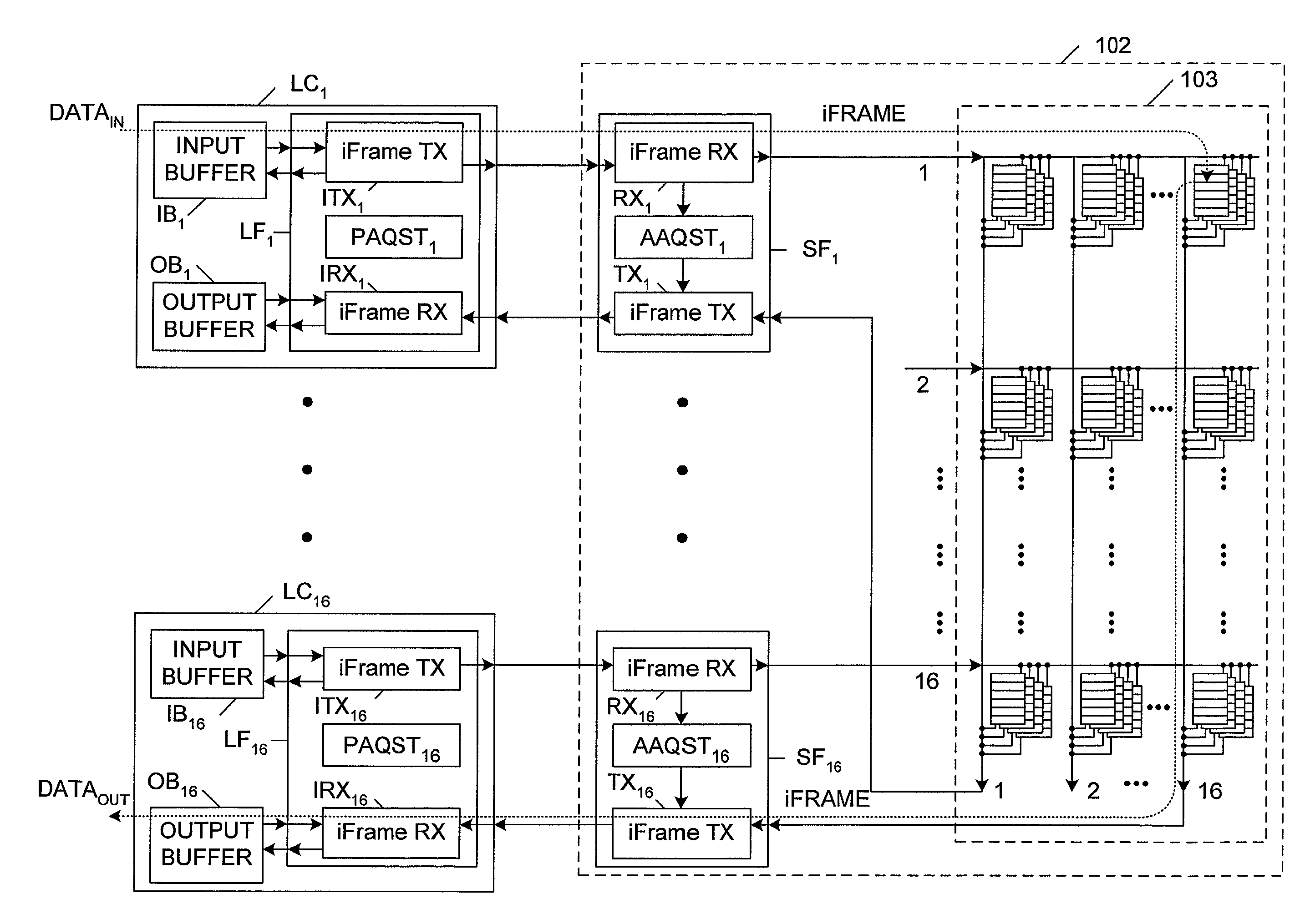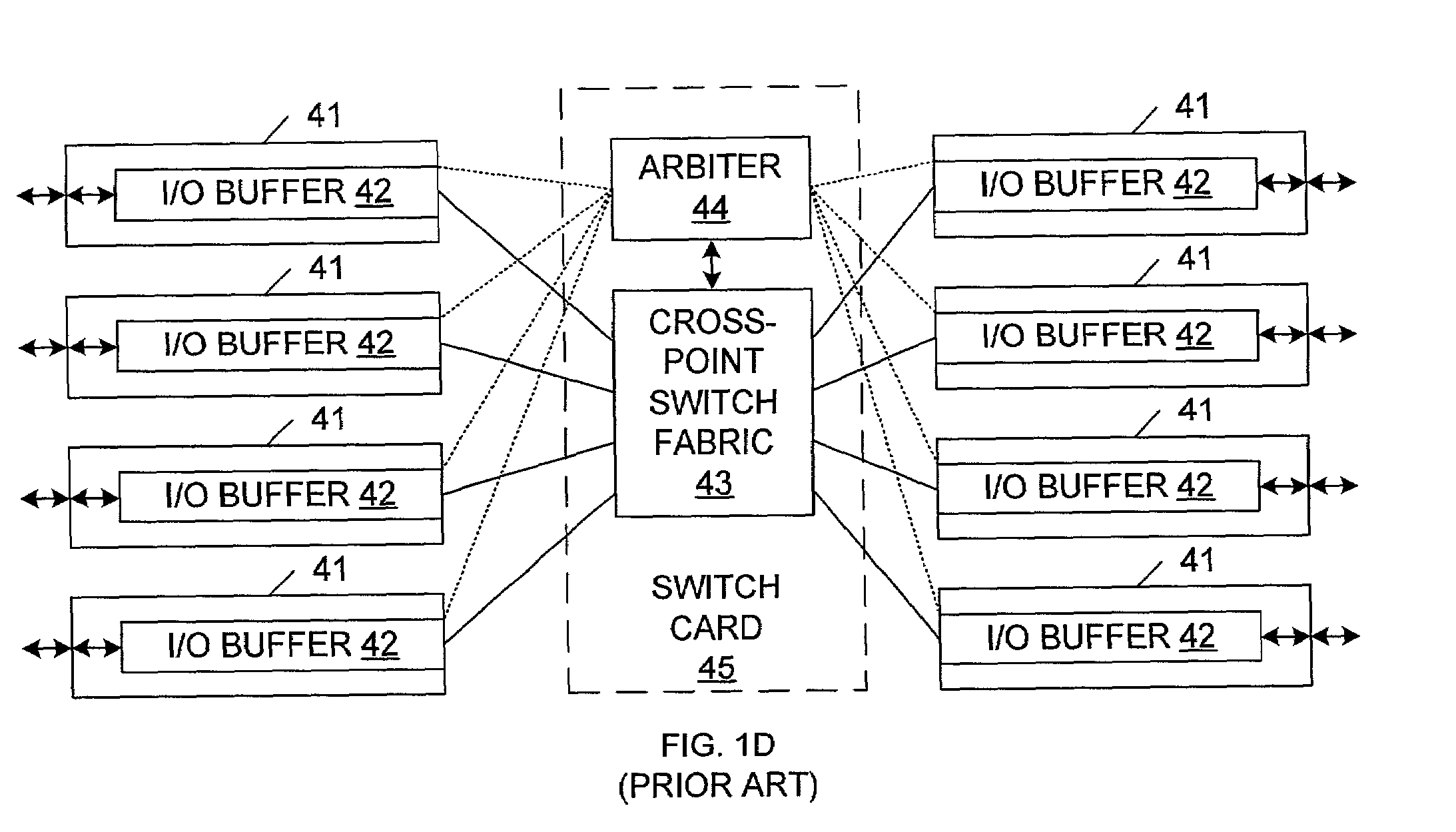Switch queue predictive protocol (SQPP) based packet switching technique
a packet switching and prediction protocol technology, applied in data switching networks, store-and-forward switching systems, digital transmission, etc., can solve problems such as difficult to design efficient arbitration algorithms, difficult to properly support multicast traffic, and cross-point architectures with input/output buffers can become blockages. achieve the effect of scalability of cross-point fabri
- Summary
- Abstract
- Description
- Claims
- Application Information
AI Technical Summary
Benefits of technology
Problems solved by technology
Method used
Image
Examples
Embodiment Construction
[0039]FIG. 2 is a block diagram illustrating a Switch Queue Predictive Protocol (SQPP) architecture 100 in accordance with one embodiment of the present invention. SQPP architecture 100 includes a switch card 101 having a store-and-forward switch fabric 102, and a plurality of line cards LC1–LC16. Line cards LC2–LC7 and LC10–LC15 are not illustrated for purposes of clarity. However, these line cards are connected in the same manner as illustrated line cards LC1, LC8, LC9 and LC16. Although sixteen line cards are described in the present embodiment, it is understood that other numbers of line cards can be used in other embodiments. Each line card LCN includes an input buffer IBN, an output buffer OBN, and a line card function block LFN, where N includes the integers between 1 and 16, inclusive. Thus, line card LC1 includes input buffer IB1, output buffer OB1 and line card function block LF1. Each line card function LFN includes an internal frame transmitter ITXN, an internal frame re...
PUM
 Login to View More
Login to View More Abstract
Description
Claims
Application Information
 Login to View More
Login to View More - R&D
- Intellectual Property
- Life Sciences
- Materials
- Tech Scout
- Unparalleled Data Quality
- Higher Quality Content
- 60% Fewer Hallucinations
Browse by: Latest US Patents, China's latest patents, Technical Efficacy Thesaurus, Application Domain, Technology Topic, Popular Technical Reports.
© 2025 PatSnap. All rights reserved.Legal|Privacy policy|Modern Slavery Act Transparency Statement|Sitemap|About US| Contact US: help@patsnap.com



